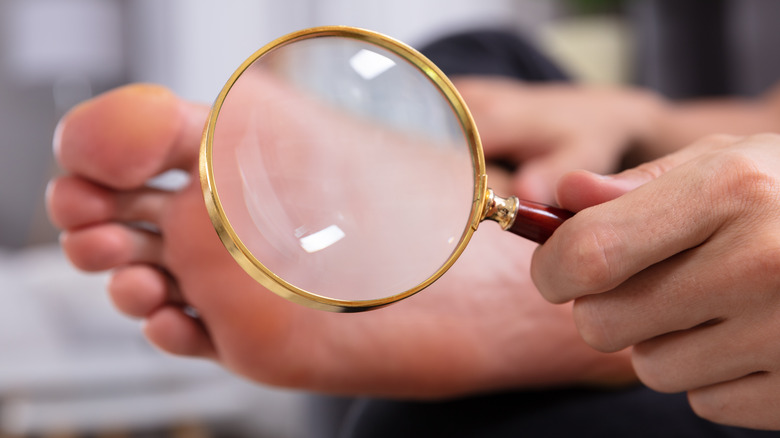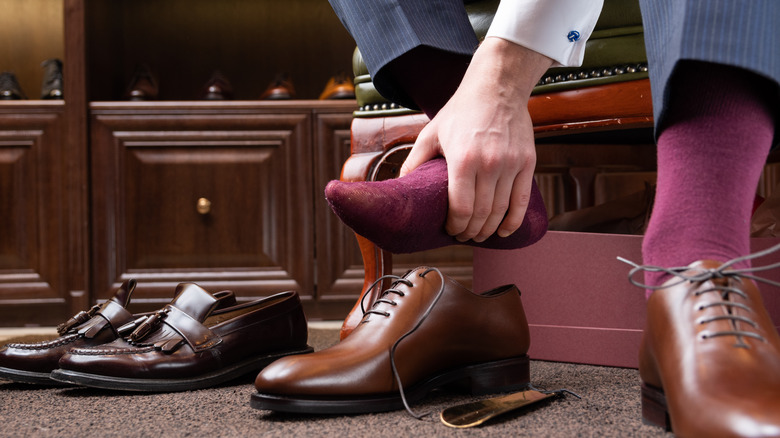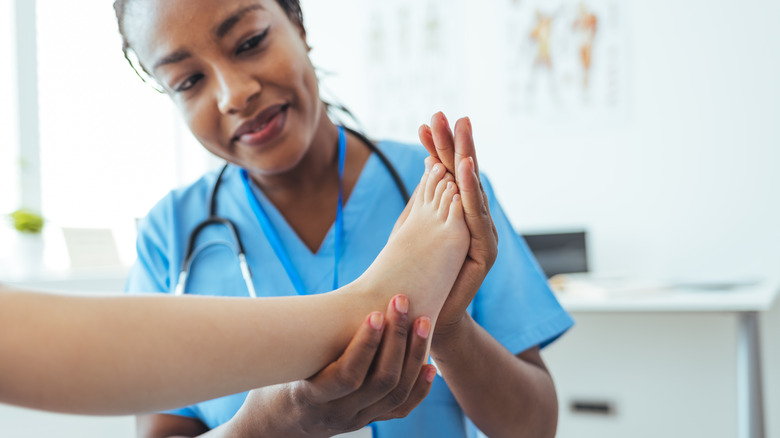Wart Vs Corn: What's Growing On Your Skin?
When it comes to the emergence of bumps and lumps on our body, bunions, acne, calluses, corns, warts, or more, may be to blame. While some of these conditions may be relatively easy to differentiate from one another — others, not so much. Corns and warts are two such examples, as they both have a lot in common. For instance, both corns and warts can appear small in size, feel painful and tender, rough in texture, and can each take up residence on our hands or feet, according to Healthline. Here's how to tell which one of these two growths you may be dealing with.
Corns and warts do have their differences. On the one hand, corns are the product of continuous abrasion. Therefore, you're more likely to find them on your feet. This is particularly true if you wear shoes that fit too loosely or too snugly. Additional risk factors include going sock-free or if you have a family medical history of corns (via Mayo Clinic). A corn's signature traits include flaking around a hard, elevated bump.
Warts and corns have different causes
What differentiates a wart from a corn is its cause. While corns develop due to friction, warts stem from a viral infection known as human papillomavirus (HPV). According to experts at the Mayo Clinic, there are more than 100 different kinds of warts. Most often, however, they are found on the knees, face, hands, and feet, as per Better Health Channel. Transmission frequently occurs through direct contact with skin or contaminated items, such as towels. The infection then makes its way into the body through small wounds, such as cuts.
Warts may feel fleshy, grainy, or rough in texture. They may also present with tiny black spots on the surface. Immunocompromised individuals or those with underdeveloped immunity, such as kids, may be particularly susceptible to warts. Skin damage, heavy sweating on the hands and feet, swimming in public pools, and biting one's nails can also boost one's chances for infection.
Treatment for corns and warts
To treat a corn, you'll want to remove what's doing the damage. If ill-fitting shoes are the cause, try utilizing pads or shoe inserts to help improve their fit and provide more comfort (per Healthline). Additionally, you may also be able to improve the appearance of a corn on your own. First, submerge your feet in warm water. Afterwards, try rubbing a pumice stone against the corn to help minimize its size. Finish up by moisturizing the area, which can help alleviate the surrounding dry skin. Alternatively, your physician can professionally remove the corn.
When it comes to warts, approximately 65% of cases resolve on their own, according to Better Health Channel. However, the healing process can take years. To help expedite treatment, try using an over-the-counter (OTC) patch, ointment, or other product to reduce its appearance. For professional treatment options, see your healthcare provider. Such treatments include surgery, laser removal, or freezing the wart to remove it in its entirety.



